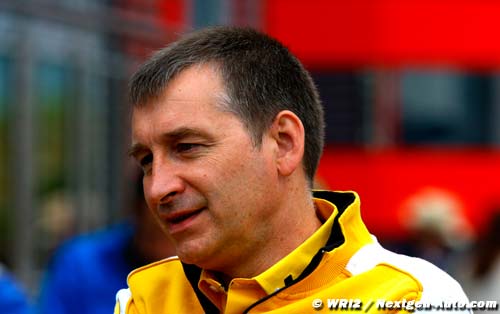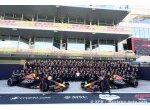Rob White : Renault F1 made ’fundamental’ engine changes
To gain performance and reliability

2015 may be the second year of competitive use for the revolutionary power units, but they still remain a huge challenge for engine manufacturers. ‘Year two of a new engine is always difficult,’ Renault Chief Technical Officer Rob White explains. ‘The 2015 power unit project was started six months before the 2014 units took to the track, ie. before we had any significant experience of the technology. Then we also needed to consider the issues arising during the season. It creates a need to be both forward thinking and reactive.
‘Splitting resources between projects is therefore a delicate balancing act, in the short, mid and long term. While certain decisions can be taken upstream, a number of design decisions were taken quite late in the day, in order to benefit from the experience of the 2014 power unit. The result is a power unit that is very different to its predecessor.’
RINGING THE CHANGES
‘We have made some fundamental changes to gain performance and reliability. We have upgraded every system and subsystem, with items that will give the most performance prioritized. The principal changes involve the internal combustion engine, turbocharger and battery. The ICE will have a new combustion chamber, exhaust system concept and variable trumpets, as permitted by the 2015 regulations. The compressor is more efficient, while the energy recovery systems are able to deal with more severe usage.
‘The 2014 unit was already well placed in its centre of gravity, however we have tidied up the packaging to give greater ease of integration into the chassis. Additionally many systems and functions have been rationalized and simplified to further ease the task. In short, there are very few carry over pieces between the 2014 and 2015 power units.’
All the performance changes have been carried out under the ‘token’ system. The power unit is divided into sections and subassemblies, with a value allocated to each. The value is indicated by a number of tokens, with a total of 66 tokens per power unit. For the 2015 season, an engine manufacturer is permitted to select 32 tokens, or 48% of the engine.
IMPROVING RELIABILITY
With just four units per year now permitted, one fewer than in 2014, the required durability is increased and reliability is even more critical this season. Renault has taken measures to improve reliability for 2015. ‘Admittedly last year our record was not the best we could have hoped for,’ admits Director of Operations, Rémi Taffin. ‘But we worked very hard and made real improvements on reliability in the second part of the year.
‘In fact we already had 2015 in mind last year as we ran all the parts to the life expected this season. That is, instead of running for the distance demanded by a five-per-year cycle, we tested them based on a four-per-year cycle, or 20% more than required.
‘Having just four units to play with this year certainly gives us less flexibility,’ he continues, ‘And when a part has an issue it will be a lot more difficult to use again. However we feel prepared knowing that the parts have been running to the lifecycle needed for some time with very few issues.’
The aim this year is clear, but modest, as Rob ventures: ‘First and foremost we need to run reliably, be quick and closer to front. We have made a significant step forward relative from 2014 and, although it is hard to quantify where we will be relative to the competition, what we can say is that we are on course to achieve our own performance objectives.’







